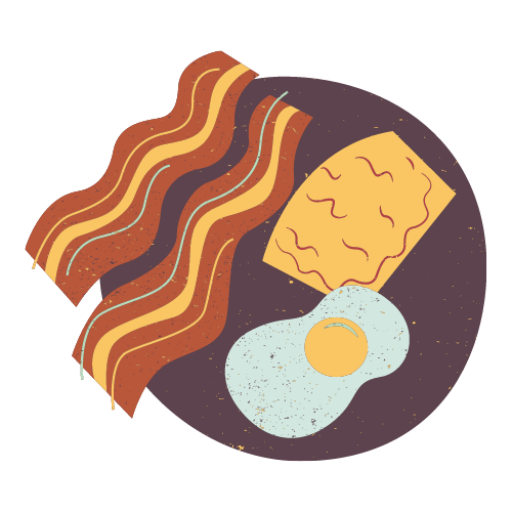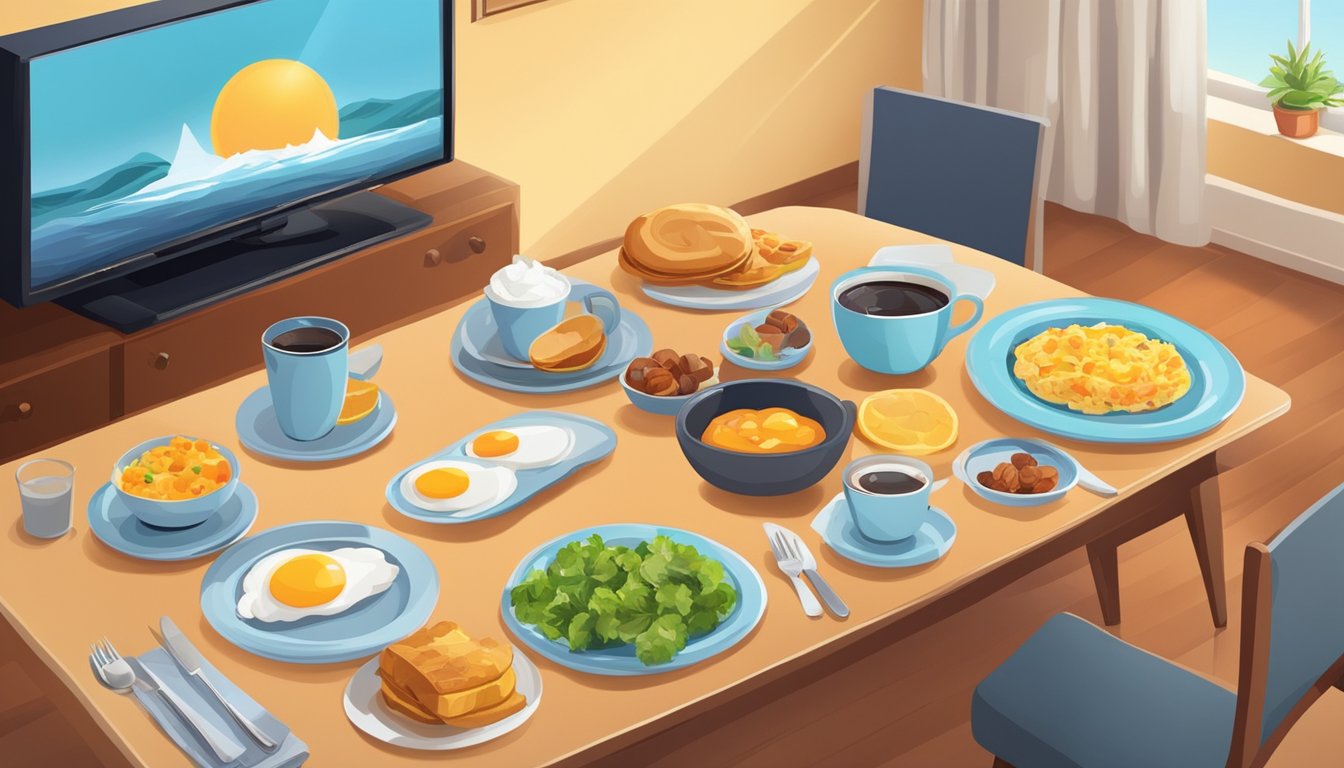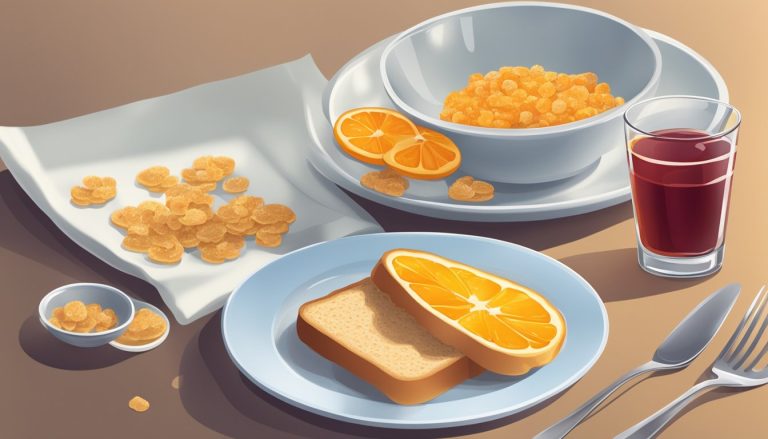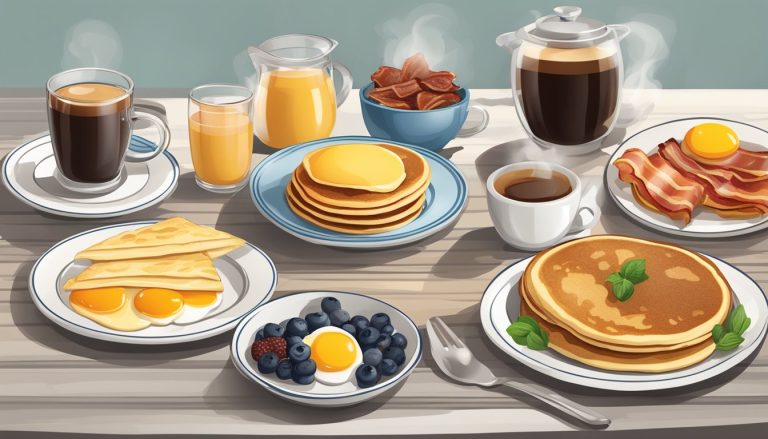Breakfast scenes in movies and TV shows often feature eggs as a central element, representing more than just a morning meal. These scenes symbolize comfort, tradition, and moments of connection between characters. From Leslie Knope’s waffle obsession in Parks and Recreation to the breakfast bonding in The Parent Trap, the humble egg has become a powerful storytelling tool in pop culture.
Jack’s Breakfast, a fictional diner, has become a recurring setting in numerous films and television series, serving as a backdrop for pivotal scenes and character development. The diner’s familiar atmosphere and comforting breakfast fare provide the perfect environment for characters to reveal their innermost thoughts, confront conflicts, or forge new relationships. This recurring motif has solidified Jack’s Breakfast as a recognizable pop culture reference in its own right.
The influence of breakfast scenes extends beyond the screen, inspiring real-life establishments and consumer behavior. Many fans seek out diners reminiscent of their favorite on-screen breakfast spots, hoping to recreate the warmth and camaraderie depicted in these fictional worlds. This phenomenon demonstrates the lasting impact of breakfast-themed pop culture references on audience perceptions and experiences.
Jack’s Cultural Significance

Jack, a name with deep roots in popular culture, has left an indelible mark on movies, television, books, and songs. Its versatility and everyman quality have made it a go-to choice for characters across genres and mediums.
Historical Context of ‘Jack’ in Popular Media
The name Jack has a long history in folklore and literature. In fairy tales, Jack appears as the clever hero in stories like “Jack and the Beanstalk” and “Jack the Giant Killer”. This tradition carried over into early films and radio shows.
In the 1930s and 1940s, Jack Benny became a household name through his radio program. Television expanded Jack’s reach, with characters like Jack Tripper in “Three’s Company” becoming cultural icons.
Films embraced Jack as well. “One Flew Over the Cuckoo’s Nest” featured Jack Nicholson in a career-defining role. The name’s popularity in media continued through the decades, appearing in blockbusters like “Titanic” and “Pirates of the Caribbean”.
The Enduring Appeal of Jack in Narratives
Jack’s enduring appeal in narratives stems from its versatility. The name can represent an everyman figure, a roguish charmer, or a clever trickster. This flexibility allows writers to craft diverse characters that resonate with audiences.
In literature, Stephen King’s “The Shining” features the memorable Jack Torrance. Music has also embraced Jack, from “Hit the Road Jack” to “Jack & Diane”. These references reinforce the name’s cultural significance.
Television series like “24” with Jack Bauer and “Lost” with Jack Shephard further cemented Jack’s place in pop culture. The name’s simplicity and familiarity make it relatable, while its history gives it depth and character.
Jack in Film and Television

Jack, a versatile and iconic name, has graced numerous films and television shows across genres and decades. This character has left an indelible mark on popular culture, shaping narratives and captivating audiences worldwide.
Jack’s Appearances in Blockbuster Movies
Jack has been a prominent figure in many blockbuster films. In “Titanic,” Jack Dawson, played by Leonardo DiCaprio, became a cultural phenomenon. The character’s tragic love story resonated with millions of viewers globally.
“The Shining” featured Jack Torrance, portrayed by Jack Nicholson, in a chilling performance that redefined horror cinema. This role showcased the darker side of a character named Jack.
In “Back to the Future,” Doc Brown’s loyal dog was named Einstein, but was often called “Einy” – a playful nod to the name Jack.
Primetime and Niche TV Shows with Jack
Television has seen its fair share of memorable Jacks. “Lost” introduced audiences to Jack Shephard, a complex character who led the survivors of Oceanic Flight 815. His journey from skeptic to believer captivated viewers for six seasons.
“24” centered around Jack Bauer, a counter-terrorist agent whose high-stakes missions unfolded in real-time. This innovative format revolutionized television storytelling.
In “This Is Us,” Jack Pearson emerged as the heart of the Pearson family, with his story told through multiple timelines. His character development and impact on his children’s lives became a central focus of the show.
Character Analysis and Evolution
Jack characters often embody qualities of leadership, bravery, and complexity. In films like “Star Wars,” Jack-like characters such as Han Solo display roguish charm and hidden depths.
Television Jacks frequently undergo significant character arcs. Jack McCoy from “Law & Order” evolved from a ruthless prosecutor to a more nuanced district attorney over his long tenure on the show.
These characters often face internal struggles, balancing personal demons with heroic actions. This duality creates depth and relatability, allowing audiences to connect with them on multiple levels.
Impact on Genres and Storytelling
Jack characters have influenced various genres. In science fiction, films like “2001: A Space Odyssey” and “TRON” feature protagonists who, while not named Jack, embody similar traits of curiosity and determination.
In comedy, characters like Jack Donaghy from “30 Rock” subvert expectations, blending sharp wit with surprising vulnerability. This approach has inspired new ways of crafting complex characters in sitcoms.
The prevalence of Jack characters has led to a recognition of the name as shorthand for an everyman hero. This trope has been both embraced and subverted in modern storytelling, allowing for fresh takes on familiar archetypes.
Cinematic and Literary Allusions

Filmmakers and TV creators frequently weave references to books, movies, and cultural touchstones into their work. These allusions enrich storytelling, reward attentive viewers, and create layers of meaning.
Homages to Literary Works
Stephen King’s novels have inspired countless film adaptations and references. “The Shining” by Stanley Kubrick draws heavily from King’s book while adding unique visual elements. The Harry Potter series seamlessly incorporates literary allusions to Greek mythology and classic British literature.
Disney animated films often allude to fairy tales and folklore. “Beauty and the Beast” references the original French story while adding new characters and plot elements. TV shows like “Stranger Things” pay homage to King’s works, with character names and plot points echoing his novels.
Cinematic References and Easter Eggs
Quentin Tarantino is known for his cinematic allusions. “Kill Bill” references martial arts films, spaghetti westerns, and anime. The “Tarantino Universe” connects his films through subtle nods and shared fictional brands.
Alfred Hitchcock’s influence is seen in many thrillers. Directors often include visual quotes from his work, like the famous shower scene from “Psycho.” The Coen Brothers frequently allude to film noir and classic Hollywood in their movies.
Metafictional Elements in Film and TV
Some films break the fourth wall, acknowledging their fictional nature. “Deadpool” directly addresses the audience and makes jokes about superhero movie tropes. “The Truman Show” explores the concept of reality TV taken to extremes.
TV shows like “Community” often parody other genres and films. One episode mimics the style of Hitchcock’s “Rear Window.” “The Simpsons” frequently includes meta-commentary on television and pop culture.
“Notting Hill” plays with the idea of celebrity culture, blurring lines between reality and fiction. “The Wizard of Oz” has become a touchstone for countless films, with its yellow brick road and ruby slippers referenced across pop culture.
Cross-Pollination of Jack in Pop Culture

Jack’s influence extends across various media, creating interconnected storylines and inspiring fan theories. Pop culture references interweave to build rich fictional worlds that captivate audiences.
Interconnected Story Universes
Jack references appear in unexpected places, linking seemingly unrelated works. The Overlook Hotel from “The Shining” pops up in other Stephen King novels, creating a shared universe. Similarly, Quentin Tarantino’s films feature recurring elements like Big Kahuna Burger, hinting at a larger connected world.
These crossovers generate excitement among fans who spot familiar elements across different stories. They add depth and intrigue to fictional universes, rewarding attentive viewers with hidden connections.
Pop Culture’s Role in World-Building
Pop culture references serve as shortcuts for world-building in TV and film. By incorporating recognizable elements, creators quickly establish a setting’s time period and cultural context.
For example, a character humming a Beatles tune instantly evokes a specific era. References to Titanic might signal themes of doomed romance or class struggles. These cultural touchstones allow writers to convey complex ideas efficiently.
Clever use of references can also add layers of meaning for savvy audiences, enhancing the viewing experience.
Fan Theories and Speculations
Pop culture references fuel fan theories and speculations, keeping audiences engaged long after credits roll. Easter eggs and subtle nods to other works inspire viewers to connect dots and imagine expanded storylines.
Online communities dissect every frame, searching for hidden meanings. A flash of an iconic logo or a passing mention of a fictional brand can spark elaborate theories about character origins or plot twists.
This engagement extends the life of media properties, maintaining interest between releases and fostering a sense of community among fans.
Pop Culture Phenomena

Pop culture has a profound impact on society, shaping trends, influencing behavior, and creating shared experiences. Iconic films, TV shows, and cultural movements have left lasting impressions on generations of fans.
Cult Classics and Fandoms
“The Breakfast Club” remains a cult classic, inspiring countless references in other media. TV shows like “The Office” have paid homage to the film’s iconic scenes and characters. “Lost” created a massive fandom with its intricate plot and mysterious island setting. The “Star Wars” franchise has built one of the largest and most dedicated fan bases in history.
These cult classics often inspire cosplay, conventions, and online communities. Fans analyze every detail, create theories, and keep the spirit of their favorite works alive long after their initial release.
Viral Trends and Memes
Pop culture phenomena frequently spawn viral trends and memes. The “Back to the Future” franchise has generated numerous memes, from hoverboards to self-lacing shoes. “The Shining” has inspired countless parodies and references in other media.
Social media platforms amplify these trends, allowing them to spread rapidly. Iconic quotes, scenes, and characters become part of the cultural lexicon.
- Popular memes:
- “Here’s Johnny!” from The Shining
- “May the Force be with you” from Star Wars
- “Great Scott!” from Back to the Future
The Role of Jack in Cultural Movements
Jack, as a character or brand, has played various roles in pop culture. In “The Wizard,” the character Jack Flack represents adventure and imagination. The “Power Rangers” franchise features several characters named Jack, each contributing to the series’ popularity.
Quentin Tarantino’s “Kill Bill” includes a character named Buck, whose truck bears the name “Pussy Wagon” – a controversial yet memorable element in pop culture. These instances demonstrate how even minor characters or references can become significant in cultural movements.
The Legacy of Jack in Media

Jack’s influence on popular culture extends far beyond his initial appearances. His character has shaped numerous works across literature, film, and television.
Influence on Future Creations
Jack’s character traits have inspired many subsequent fictional figures. In Stephen King’s novels, echoes of Jack’s complexity can be found in characters like Jack Torrance from “The Shining.” Stanley Kubrick’s film adaptation further cemented this connection.
Television shows like “Lost” incorporated elements reminiscent of Jack’s persona. The character of Jack Shephard, a conflicted leader, shares similarities with earlier Jack archetypes.
In Los Angeles, filmmakers often draw from Jack’s legacy when crafting multifaceted protagonists. His impact on screenwriting is evident in the nuanced anti-heroes that populate modern cinema.
Jack as a Template for New Characters
Writers frequently use Jack as a blueprint for creating morally ambiguous characters. His blend of charm and unpredictability serves as a model for complex protagonists.
In crime dramas, detectives often exhibit Jack-like qualities. They may be brilliant yet flawed, mirroring Jack’s genius and internal struggles.
Video game developers have also adopted aspects of Jack’s character. Many RPG protagonists display his trademark wit and adaptability.
Recurring Themes and Motifs
Jack’s story often involves themes of redemption and personal growth. These motifs appear regularly in contemporary narratives across various media.
The concept of a character grappling with their own nature is a recurring element inspired by Jack. This internal conflict drives plots in numerous books and films.
Jack’s relationship with authority figures has become a common trope. Many stories explore the tension between individualism and societal expectations, echoing Jack’s experiences.
His adventures frequently incorporate puzzles or mysteries, influencing the structure of modern thrillers and adventure stories.
Analyzing Jack’s Role

Jack stands as a complex character straddling the line between hero and villain. His journey weaves through comedic and horrific elements, revealing layers of depth that resonate with audiences.
Protagonist vs. Antagonist Perspectives
Jack often blurs the lines between protagonist and antagonist. In comedic roles, he frequently portrays the lovable underdog, using his wit and charm to overcome obstacles. However, in horror films, Jack can transform into a menacing presence, his genius twisted by darker impulses.
His ability to shift between these perspectives keeps viewers on edge, never quite sure where his character will land. This duality adds depth to his performances and challenges audience expectations.
The Transformation of Jack Over Time
Jack’s characters often undergo significant transformations. Early in narratives, he may appear stable and rational. As stories progress, internal struggles or external pressures push him to evolve, sometimes drastically.
In comedies, this might involve personal growth or overcoming fears. Horror films tend to showcase a descent into madness or obsession. These transformations highlight Jack’s range as an actor and provide compelling story arcs.
Jack in the Realm of Comedy and Horror
Jack excels in both comedy and horror, genres that seem vastly different but share surprising similarities. His comedic timing and expressive face bring levity to tense situations. In horror, these same skills create unsettling moments of dark humor amidst terror.
His versatility allows him to navigate both genres with ease. Jack can elicit laughter one moment and screams the next, often within the same scene. This ability to blend genres adds depth to his performances and keeps audiences engaged.
Character Depth and Relatability
Despite often playing extreme characters, Jack brings a sense of relatability to his roles. He taps into universal experiences – fear, love, ambition – making even his most outlandish characters feel grounded.
In some roles, Jack portrays struggles with addiction or mental health issues. These performances offer nuanced explorations of complex topics. His characters’ inner conflicts and personal demons resonate with viewers, creating emotional connections.
Jack’s ability to convey vulnerability alongside strength adds layers to his characters. Whether playing a comedic genius or a horror movie villain, he infuses each role with humanity and depth.
In-Depth Series Analysis

Jack’s character arc and pop culture references evolve across seasons, shaping his role in key plotlines. His interactions with other characters and representations in different series offer insights into his development and cultural impact.
Case Study: Jack’s Role in Seasonal Plotlines
Season 1 introduces Jack as a witty commentator on pop culture, often referencing iconic films like “The Breakfast Club” during breakfast scenes. His quips about Judd Nelson and Molly Ringwald establish him as a 1980s aficionado.
As the series progresses, Jack’s references expand to include more contemporary shows. In Season 2, he draws parallels between the show’s dynamics and “American Idol” auditions, comparing the judges’ critiques to his own life experiences.
Jack’s pop culture knowledge becomes integral to solving cases, with his ability to recall obscure movie facts often providing crucial clues. This unique skill set elevates his role from comic relief to a valuable team asset.
Character Progression from Season to Season
Jack’s character depth increases notably from Season 1 to Season 2. Initially portrayed as a one-dimensional pop culture enthusiast, he gains complexity as writers explore his backstory and motivations.
Season 1 Jack:
- Primarily delivers witty one-liners
- References focus on 1980s movies and TV shows
- Limited character development
Season 2 Jack:
- Shows vulnerability and personal growth
- Expands references to include current pop culture
- Forms deeper relationships with other characters
This progression allows Jack to tackle more serious storylines while maintaining his signature humor and pop culture expertise.
Comparison in Representations Across Series
Jack’s character type appears in various TV shows, often as the pop culture-savvy friend or colleague. Compared to similar characters, Jack stands out for his ability to integrate references seamlessly into dialogue and problem-solving.
| Series | Character | Pop Culture Focus | Integration |
|---|---|---|---|
| Jack’s Show | Jack | Broad, 1980s-present | Central to plot |
| Community | Abed | TV and film | Meta-commentary |
| Big Bang Theory | Sheldon | Sci-fi and comics | Social commentary |
Jack’s references serve a narrative purpose, unlike some shows where pop culture nods feel forced. His knowledge evolves with the times, keeping his character fresh and relatable to audiences across multiple seasons.
Dynamics of Pop Culture Dialogue

Pop culture dialogue shapes and reflects societal trends through memorable quotes and phrases. These linguistic elements often originate from breakfast scenes in TV and film, becoming part of everyday conversation.
Phrases and Quotes Made Famous by Jack
Jack’s breakfast-related quips have entered the pop culture lexicon. “I’ll have what she’s having” from “When Harry Met Sally” became an instant classic, referencing Meg Ryan’s famous diner scene. TV shows like “Friends” popularized Joey’s catchphrase “How you doin’?” often used during breakfast gatherings at Central Perk.
Ryan Gosling’s character in “La La Land” delivered the line “A bit of madness is key” over a shared morning meal, resonating with viewers. These quotes transcend their original context, finding new life in everyday conversations and social media memes.
Dialogical Influence and Popularity
Breakfast dialogue in pop culture often reflects broader social dynamics. “Breaking Bad” used tense family breakfast scenes to highlight Walter White’s descent into criminality. “The Office” showcased workplace relationships through morning interactions in the break room.
Quotes from these scenes spread rapidly through social media, becoming cultural touchstones. Fans recreate and reference them, solidifying their place in pop culture. TV shows like “Stranger Things” deliberately craft quotable breakfast moments, knowing their potential for viral spread.
This dialogical influence extends beyond entertainment, impacting real-world communication patterns and social norms.
Jack’s Future in Pop Culture

Jack’s iconic status in pop culture remains strong, with potential for growth across various media platforms. His influence extends beyond traditional formats, adapting to new technologies and audience preferences.
Sustaining Relevance in the Digital Age
Jack’s presence in social media continues to grow. Memes and GIFs featuring his memorable scenes circulate widely on platforms like Twitter and Instagram. Fan-created content, including artwork and fan fiction, keeps Jack’s character alive in online communities. Streaming services have made his classic appearances more accessible to new generations of viewers. This digital presence helps maintain Jack’s relevance among younger audiences who may not have experienced his original on-screen performances.
Potentials for Reboots and Spin-offs
Hollywood’s trend of rebooting classic franchises opens doors for Jack’s return to the screen. A modern reimagining of his character could appeal to both nostalgic fans and new viewers. Potential spin-off series focusing on Jack’s earlier years or untold adventures are being considered by studios. These projects aim to expand his backstory while maintaining the essence of his character. Voice-over roles in animated series or video games could also extend Jack’s influence across different media formats.
Adaptation to New Media and Platforms
Virtual reality (VR) and augmented reality (AR) technologies offer new ways to experience Jack’s world. Interactive experiences allow fans to step into his shoes or explore recreated sets from his most famous scenes. Mobile apps and games featuring Jack’s likeness tap into the growing market of casual gamers. Podcast series exploring Jack’s impact on pop culture attract listeners interested in behind-the-scenes stories and analysis. These adaptations ensure Jack’s continued presence in evolving entertainment landscapes, keeping his legacy vibrant for years to come.
Conclusion

Jack’s Breakfast and Pop Culture has left an indelible mark on television and film. Its influence extends far beyond its original release, inspiring countless references and homages.
The iconic characters and memorable scenes continue to resonate with audiences decades later. From direct quotes to subtle nods, creators frequently pay tribute to this cultural touchstone.
Pop culture’s ongoing embrace of Jack’s Breakfast speaks to its timeless themes and relatable characters. It has become a shared reference point across generations of viewers and creators alike.
The film’s legacy lives on through these references, introducing new audiences to its enduring appeal. Its impact on popular media showcases the lasting power of well-crafted storytelling.
As long as coming-of-age stories remain relevant, Jack’s Breakfast will likely maintain its place in the cultural zeitgeist. Its continued presence in TV and film references cements its status as a true classic.




